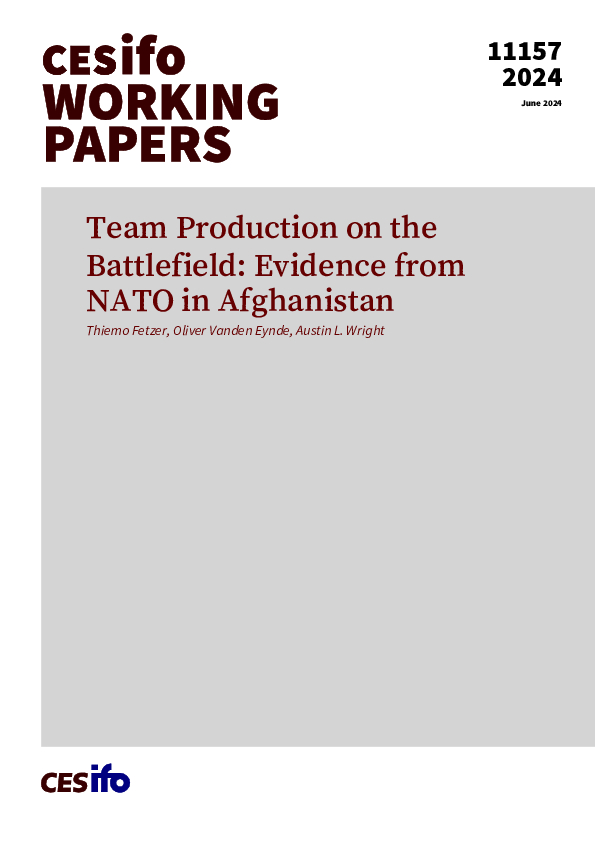Team Production on the Battlefield: Evidence from NATO in Afghanistan
CESifo, Munich, 2024
CESifo Working Paper No. 11157

Managing military operations across and between teams of partner nations remains a first-order challenge to security and development during conflict. NATO, under the umbrella of the International Security Assistance Force (ISAF), brought together troops from 28 countries to help enhance security provision in Afghanistan. ISAF units were given responsibility for specific operational units. The assignment of responsibilities to different national armed forces could lead to coordination problems. We explore whether the provision of security is affected by horizontal frictions (when different countries are responsible for different sides of borders) or vertical frictions (when different countries control different levels of the operational hierarchy). We find that both horizontal frictions and vertical frictions reduce military support activities, including aid projects. They are also associated with higher levels of insurgent violence. These findings indicate that misalignment between units within military organizations can undermine the effectiveness of security and development interventions during war, with broader implications for managing complex teams under risk.
Public Choice